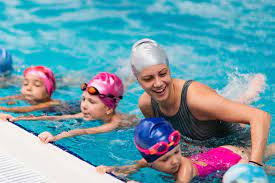Australia’s relationship with water is as serious as it is scenic. From beach barbies to backyard pools, water shapes our lifestyle—but it also brings real risk. Every year, dozens of Australians lose their lives in preventable water incidents, and many more face lifelong consequences. Understanding water safety isn’t just smart—it’s essential. That’s where a structured water safety course comes in.
Let’s unpack why water security matters, who needs this training, and how it fits into a broader effort to keep Australians safe near water.
Why Water Security Starts with You
Water security doesn’t just mean full dams or clean drinking water. It’s also about keeping ourselves and others safe in aquatic environments—lakes, pools, oceans, and everything in between.
At the personal level, water security means being prepared. Can you identify a rip current? Do you know the right technique to help someone struggling in water—without putting yourself at risk? Have you learned CPR?
These are the types of critical skills taught in a water safety course. The goal isn’t to turn you into a lifeguard overnight—it’s to give you the confidence to react calmly and correctly when it counts.
Who Should Take a Water Safety Course?
A common myth is that water safety training is only for professionals. That couldn’t be further from the truth. Courses are designed to suit a wide range of age groups and experience levels:
- Parents and carers: Understanding water hazards helps protect young children, especially around home pools and creeks.
- Educators and early learning staff: Responsible for groups of kids, they’re often first responders in emergencies.
- Older adults: Changing mobility and reflexes can affect how safely seniors interact with water.
- New Australians: For those unfamiliar with local conditions, beaches, and wildlife, education is a vital safety net.
- Recreational swimmers and boaters: Knowing what to do in a crisis can mean the difference between panic and control.
Completing a water safety course is a proactive way to build lifelong skills and help make your community safer.
What’s Included in a Water Safety Course?
Courses vary slightly depending on age and experience, but most include practical and theoretical components that cover:
- Basic swimming and survival strokes
- Recognising hazards in different water environments
- Safe water entry and exit techniques
- Rescue strategies without putting yourself at risk
- CPR and first aid, with a focus on aquatic emergencies
Some courses even cover boating safety, weather awareness, and how to manage group supervision around water.
By participating in a water safety course, you’re not just learning to stay afloat—you’re learning to take control when the unexpected happens.
Australia’s Current Water Safety Challenges
Despite our strong swim culture, Australia still sees high rates of drowning, particularly in regional and remote areas. The Royal Life Saving National Drowning Report 2023 edition found that 281 people drowned across the country in the 12 months to July 2023. A staggering number—many of them preventable.
Seasonal weather events also raise concerns about flash floods, swollen rivers, and strong coastal conditions. Even strong swimmers can be caught off guard.
In this climate, the importance of formal training through a water safety course can’t be overstated.
Water Safety Education in Schools and Communities
Many schools now integrate water safety into their curriculum. But what about adults who missed that opportunity? Or families who don’t have easy access to beaches or swimming pools?
Community centres and aquatic facilities are stepping up, offering accessible courses for people of all backgrounds. These are often run on weekends or evenings, making them easier to fit into busy lives. For some, it’s a refresher. For others, it’s the first time they’ve ever received formal water safety training.
Taking a water safety course doesn’t mean signing up for weeks of study. Some sessions take just a few hours and offer lasting benefits.
How to Choose the Right Water Safety Course
There are different course types, and selecting the right one depends on your goals and situation. Here’s a quick guide:
| Course Focus | Best For | Format |
|---|---|---|
| General Water Safety | Families, carers, schools | In-person |
| CPR and First Aid | Workplace compliance, educators | In-person/Hybrid |
| Open Water Awareness | Beachgoers, tourists, surf enthusiasts | On-site + fieldwork |
| Aquatic Supervision | Teachers, group leaders, support workers | Structured modules |
If you’re not sure where to start, browse options through your local aquatic centre or search online for accredited water safety course providers.
Building a Culture of Water Confidence
Taking a water safety course is about more than ticking a box—it’s about protecting lives. Whether you’re helping a child take their first swim or navigating surf with your mates, water confidence starts with knowledge and preparation.
As Australians, we pride ourselves on our connection to the coast and waterways. But pride needs to be backed with preparation. Safety isn’t instinctive—it’s learned. And the time to learn is before you need it.
Final Thought
Water safety doesn’t require heroics—just education. A short course can give you the tools to make smarter decisions, react faster, and even save a life. In a country where water is part of everyday life, that’s something everyone should have under their belt.

